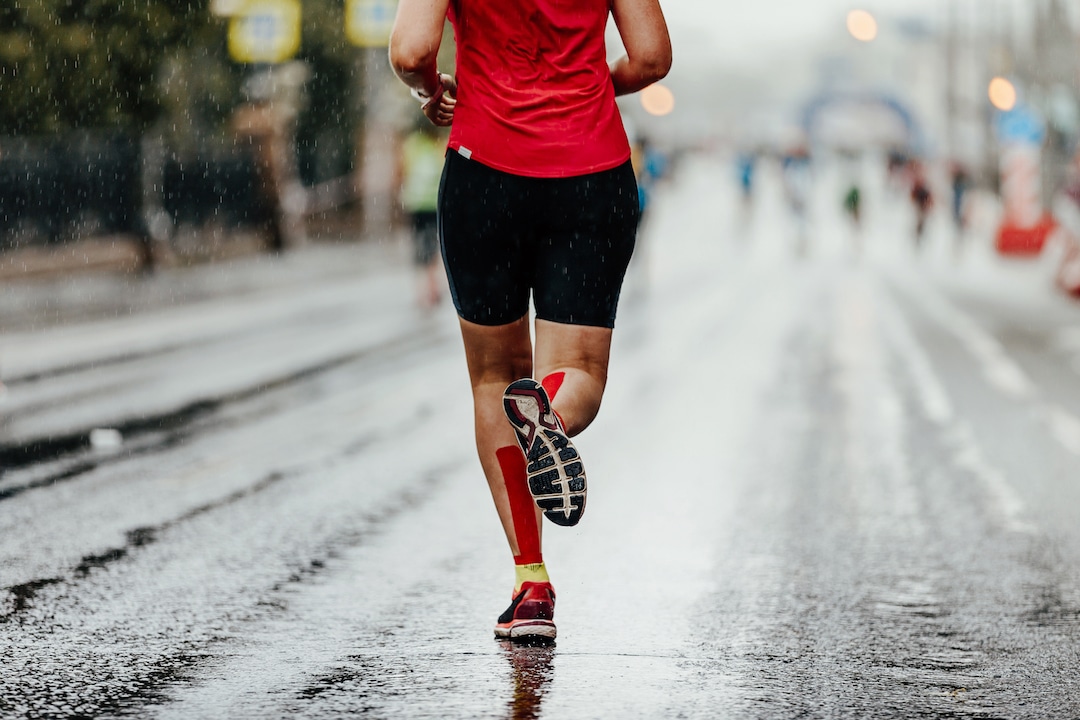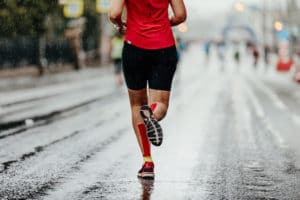
Calf Injuries from Sports
Calf injuries from sports are common; Especially when power in acceleration or deceleration are required by the group of lower limb muscles. What we refer to as the calf muscle actually consists of three separate muscles. That’s the gastrocnemius, the soleus and the plantaris muscles.
The soleus originates just below the knee joint at the tibia and fibula. It then attaches (along with the tendons of the plantaris and gastrocs) via the Achilles tendon at the calcaneus (the heel bone). Its action is to plantarflex your foot. In other words, it allows you to point your toes downwards.
What muscle fibres are the calf made of?

The muscle is made up of slow twitch (type 1) muscle fibres. This means that it is more resistant to fatigue than the more power generating gastrocnemius. Despite this however, in the high-level athlete who undergoes multiple training sessions per week, this muscle can be aggravated through repetitive use.
Athletes are prone to developing a level of delayed onset muscle soreness (DOMS) following training sessions, however, the sensation of a deep dull ache or even a mild cramp that lasts 1-2 days post training or following a game may be an indication of injury to the soleus muscle (grade 1 or 2 strain).
In some cases, when pain levels are elevated and accompanied by swelling and loss of function, there may be a full thickness tear of the muscle. Other possible causes of calf pain include injury to the gastrocnemius muscle or Achilles tendon while cramping may also be caused due to a lack of potassium (hypokalemia). Following a comprehensive assessment, the physiotherapist may be able to determine the cause of the calf pain. A cramping calf is equivalent to a low-grade muscle strain.
In the event that the athlete’s symptoms have risen from an injury to the soleus muscle, rehabilitation for this injury needs to commence as soon as possible in order to prevent further calf injuries as well as avoid delays in returning to sport. Treatment for the calf injuries will depend on the severity of the muscle strain.
How do we treat calf injuries?
Treatment will depend on the severity of the calf injuries.
The varying degrees of muscle injury are variable dependant on the degree of muscle fibre disruption.
- Grade 1 strain: Mild injury <10 degrees muscle fibre disruption
- Grade 2 strain: Moderate injury; 10-50% muscle fibre disruption
- Grade 3 strain: Severe injury; 50 – 100% disruption of muscle fibres.
Treatment involves the RICER (rest, ice, compression, elevation and referral) to alleviate any inflammation, a progressive strengthening program provided that the athlete experiences improvement in symptoms, proprioceptive training and sports-specific training.
It may take a minimum of three weeks for the injury to recover (and that’s just for a grade I or occasionally grade II injury) and as you can imagine, this is a long time off training for an athlete of any level!
While all you sporting enthusiasts have rather blazay attitude about the less painful stuff, we hope reading this reminds you to be aware of the subtle presentations in your muscles that can indicate more serious injury!
If you would like to learn more about calf injuries related to sports, get in touch with our sports physiotherapy or exercise physiology team for a consultation today.
References:
Australian Physiotherapy Association (2012) Sports Physio Magazine. Issue 2: 10-11.
Dixon, J.B., (2009) Gastrocnemius vs. soleus strain: how to differentiate and deal with calf muscle injuries. Curr Rev Musculoskelet Med 2:74-77.
Updated 29/05/2020



